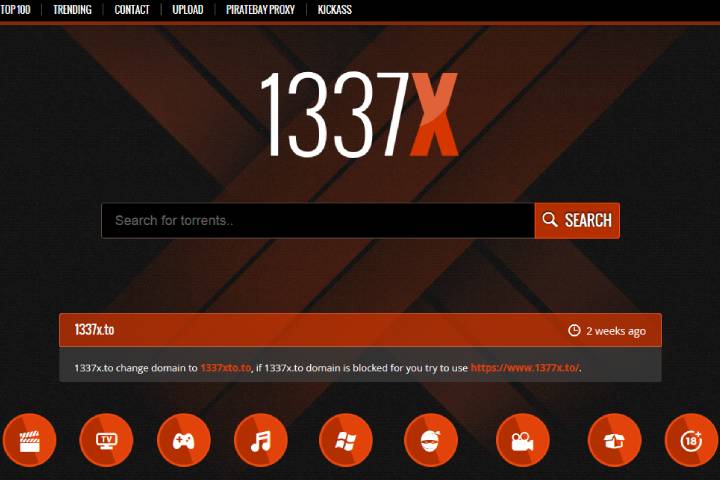Business
Software-Defined Storage: The Answer to High-Availability and Disaster Recovery Challenges
In this article, you will learn more about software-defined storage and how it solves High Availability and Disaster Recovery problems.

Data is everything in today’s world, and losing it can be catastrophic to businesses across all industries. And this is where high availability (HA) and disaster recovery (DR) comes into the picture. High Availability and Disaster Recovery are two critical aspects of IT infrastructures that aim to ensure that mission-critical systems, applications, and data are available and accessible at all times.
While traditional storage solutions have been fruitful in the past, they no longer meet the demands of modern businesses. That’s where software-defined storage (SDS) comes in as an innovative solution to the High Availability and Disaster Recovery challenges.
In this article, you will learn more about software-defined storage and how it solves High Availability and Disaster Recovery problems.
But first things first…….,
1. What is Software Defined Storage?
Before we dive into the main agenda, let’s first understand what Software Defined Storage is and why it is so important.
Software Defined Storage is a new storage technology that’s quickly gaining traction in the market. It’s a software-based, highly flexible storage solution that separates storage software from the underlying hardware, allowing users to create a highly scalable and dynamic storage environment. In SDS, the storage system can be created, configured, and managed through software, providing significant benefits over traditional storage solutions.
2. Why is Software Defined Storage Important?
The primary significance of SDS is that it provides a cost-effective, resilient, and scalable solution for data storage. It eliminates the need for organizations to add physical storage units for every additional byte of data, which can be both cumbersome and expensive. With SDS, businesses can easily scale storage capacity as per their requirements without the need for additional hardware. Moreover, SDS solutions are highly resilient and fault-tolerant, ensuring you never lose data just in case of any hardware failure.
3. The Benefits of Software-Defined Storage for High Availability and Disaster Recovery
Due to its highly flexible and dynamic architecture, SDS has several benefits over traditional storage solutions with respect to High Availability and Disaster Recovery.
4. Cost-effective
SDS solutions are often more cost-effective than traditional storage solutions. That is so because SDS leverages commodity hardware, which is typically less expensive than proprietary hardware. Additionally, Software Defined Storage eliminates some of the more costly components found in traditional storage solutions, such as specialized controllers and hardware-based redundancy schemes. As such, businesses can save significantly on both capital and operational expenditure.
5. High Scalability
SDS solutions have a highly scalable architecture that allows for seamless expansion and contraction of storage capacity. That means that businesses can quickly and easily grow their storage infrastructure to meet the changing demands of their operations. Additionally, SDS solutions allow for the creation of highly available and redundant storage environments, which are critical for keeping mission-critical applications online.
6. Simplified Management
SDS solutions have a centralized management interface, eliminating the need for complex and time-consuming management tasks. With SDS, storage policies and provisioning can be streamlined and automated, thus freeing IT teams to focus on more critical functions. The centralized approach also makes it easier to monitor and troubleshoot storage systems. That is critical for ensuring High Availability and Disaster Recovery.
7. Flexibility
SDS solutions are highly flexible and can support a wide range of storage workloads. That includes traditional block-based storage, file-based storage, and object-based storage. This flexibility enables businesses to deploy the storage solutions that are best suited to their specific needs without being restricted by hardware or software limitations.

8. Disaster Recovery
SDS can play a significant role in DR. SDS-based storage solutions can create copies of data and replicate it across multiple sites or even clouds, providing businesses with multiple recovery points and tiers of data availability. Additionally, SDS can integrate natively with cloud-based DR solutions, making it easier to fall over to a cloud environment just in case of a disaster.
9. How Does Software Defined Storage Helps Address High Availability and Disaster Recovery Problems?
SDS provides a unified platform to manage and protect data, which makes it ideal for implementing high availability (HA) and disaster recovery (DR) solutions. The following are some of the ways SDS helps address HA and DR problems:
10. Replication and Load Balancing
SDS facilitates the replication of data to multiple locations. That enables load balancing and ensures optimum utilization of storage resources. In the case of a hardware failure, the SDS cluster can quickly redirect traffic to the alternate resources available, ensuring high availability.
11. Data Protection and Redundancy
SDS supports various data protection mechanisms, including mirroring, erasure coding, and RAID. These data protection mechanisms ensure data redundancy, which means that in case of hardware failure, data can still be retrieved from other replicas, ensuring there’s not a single point of failure.
12. Data Mobility
SDS facilitates data mobility, enabling data to be moved across different storage platforms without downtime. That ensures business continuity and helps businesses adapt to changing storage requirements without incurring any operational costs.
13. Scalability
SDS allows businesses to scale their storage infrastructure on demand without worrying about the underlying hardware. That ensures easy management and maintenance of storage infrastructure, reducing overhead costs.
14. Centralized Management
SDS allows for centralized management of storage resources, making it easier to maintain and monitor storage resources. That ensures that businesses can quickly identify and resolve any issues, ensuring high availability and disaster recovery.
Conclusion
The importance of High Availability and Disaster Recovery cannot be overstated, especially in today’s world, where data is at the very heart of every business operation. Software Defined Storage is a revolutionary technology that provides businesses with an effective solution to the High Availability and Disaster Recovery challenges they face.
With its cost-effectiveness, scalability, simplified management, flexibility, and DR capabilities, SDS-based storage solutions offer businesses the tools they need to keep their systems and data highly available at all times. Therefore, business owners should begin exploring SDS-based storage solutions to ensure they have a reliable HA and DR strategy in place.
It’s never too late to explore SDS-based storage solutions. So, if you aren’t doing it yet, you can start now and take full advantage of this superb technology.
-

 Instagram4 years ago
Instagram4 years agoBuy IG likes and buy organic Instagram followers: where to buy them and how?
-

 Instagram4 years ago
Instagram4 years ago100% Genuine Instagram Followers & Likes with Guaranteed Tool
-

 Business5 years ago
Business5 years ago7 Must Have Digital Marketing Tools For Your Small Businesses
-

 Instagram4 years ago
Instagram4 years agoInstagram Followers And Likes – Online Social Media Platform














